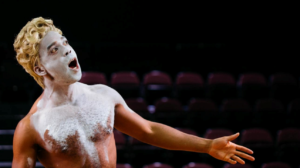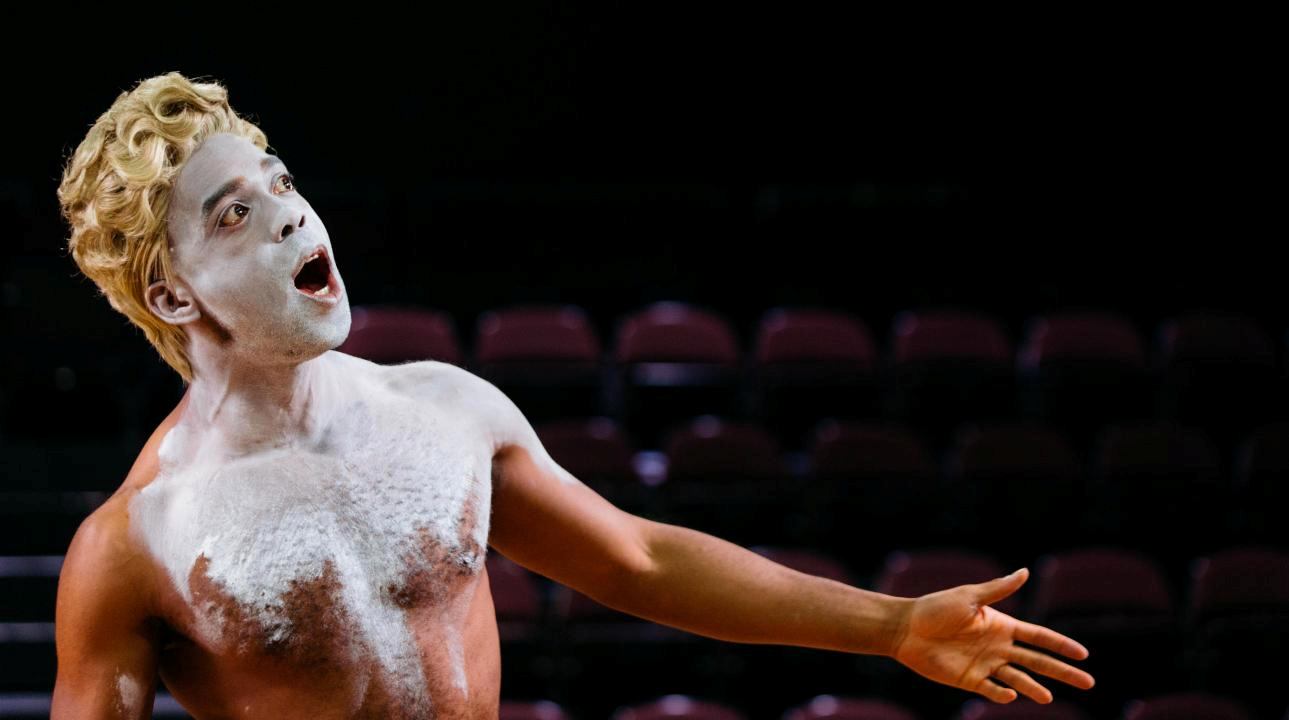21 June 2018
An Octoroon (a play by Branden Jacob-Jenkins)
The National Theatre
reviewed by Adam McCormack
Star rating: ****
 Clothed in nothing but socks and underpants a black playwright gives a monologue describing how, through visits to his therapist, he decided to put on a version of a play that makes him happy. The problem, however, is how to find and retain the white members of a cast for his interpretation of Dion Boucicault’s nineteenth century play, The Octoroon. The only solution, it seems, is for the writer to play the parts himself – cue the daubing on of much white paint.
Clothed in nothing but socks and underpants a black playwright gives a monologue describing how, through visits to his therapist, he decided to put on a version of a play that makes him happy. The problem, however, is how to find and retain the white members of a cast for his interpretation of Dion Boucicault’s nineteenth century play, The Octoroon. The only solution, it seems, is for the writer to play the parts himself – cue the daubing on of much white paint.
An Octoroon, in case you didn’t know, is someone who is one eighth black by descent. On a Louisiana cotton plantation, slaves toil in the fields and work in the house as servants. George, a photographer, returns from Paris to visit his aunt and the plantation he is heir to, and finds that the bank is about to foreclose. This should not be a problem, as a long-standing debt is due to repaid, but the evil M’Closky, who wants to buy the plantation, intercepts the letter confirming this, murdering a black servant and framing a Native American in the process. The rivalry also exists in love, for both M’Closky and George fall for the aunt’s adopted niece, Zoe. She returns George’s affections, but the problem is that she is an Octoroon and cannot marry a white man. Further, she is technically still a slave, and will be sold with the plantation. Should George marry a wealthy heiress and save the estate, or escape with his true love to a more tolerant society?
If this sounds a standard nineteenth century melodrama that is because, superficially, it is. However, in Branden Jacob-Jenkins brilliantly re-imagined interpretation it becomes so much more. Beyond the story of putting the play together, with a background of profane rap music, the staging is anarchic, innovative and hilarious. The Dorfman, as ever, is an adaptable space, lending itself to being transformed from plantation to slave ship, while being splattered with blood and (yes, really) set on fire, with the actors negotiating narrow beams and skating under a crinoline skirt. Ken Nwosu, who plays both of the key white parts, displays sublime comic timing – not least when he is having a duel with himself – but is also able to inject some pathos. Just when the play borders on farce, he stops the action and confronts us with the harsh realities of being black in America, and not just in the nineteenth century. To witness an audience move from great amusement to stunned silence is rare, and to be able to achieve this is a strong endorsement of Jacob-Jenkins’ growing reputation.
This is not the type of play that most if us have seen before and the approach takes some getting used to. Similarly, the messages on race and racism will provoke much debate, but that is what good theatre should do – make us think and confront prejudice. Branden Jacob-Jenkins is working with Nicholas Hytner to develop a new play at the Bridge. On the evidence of An Octoroon – I can’t wait.


